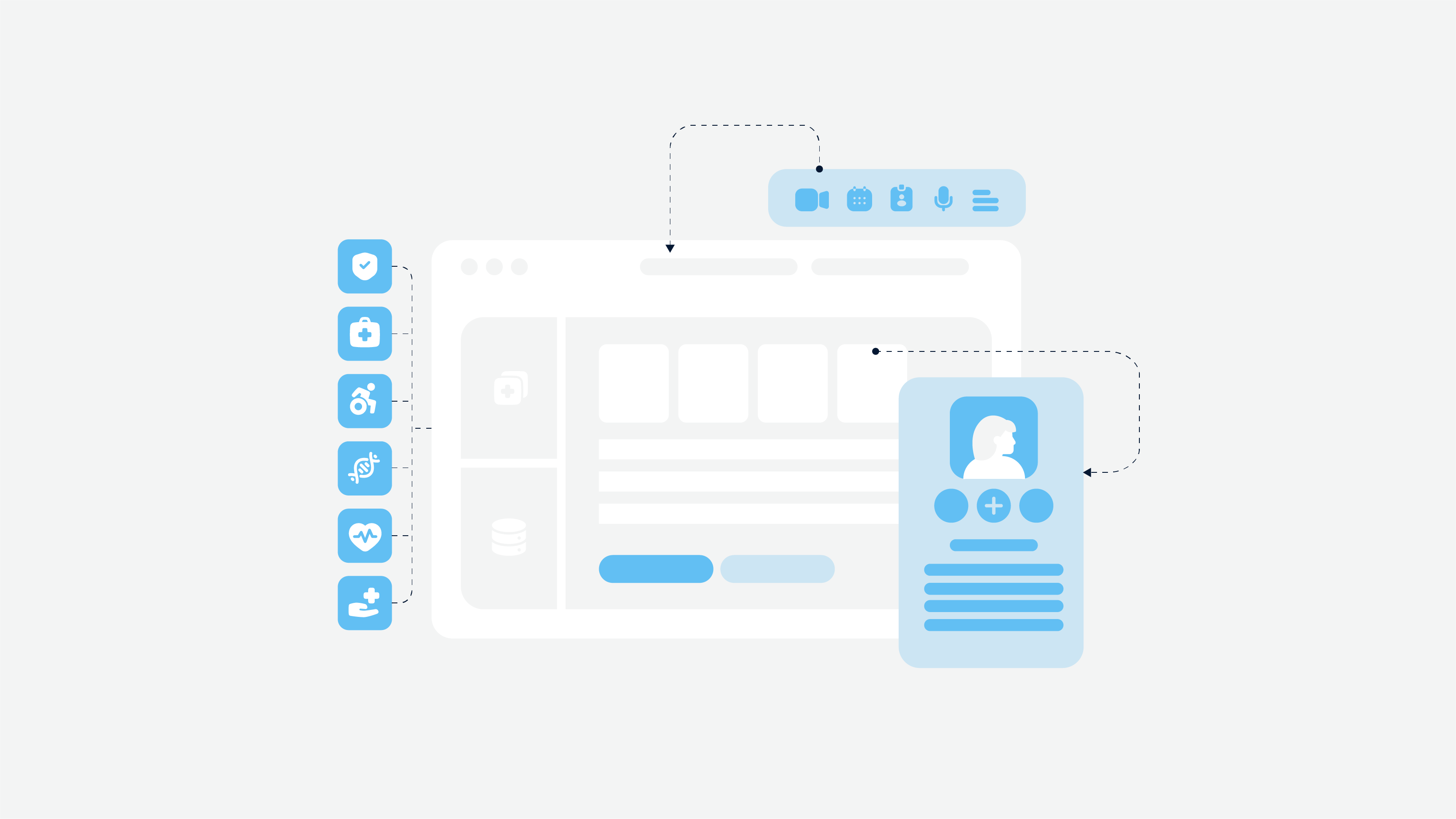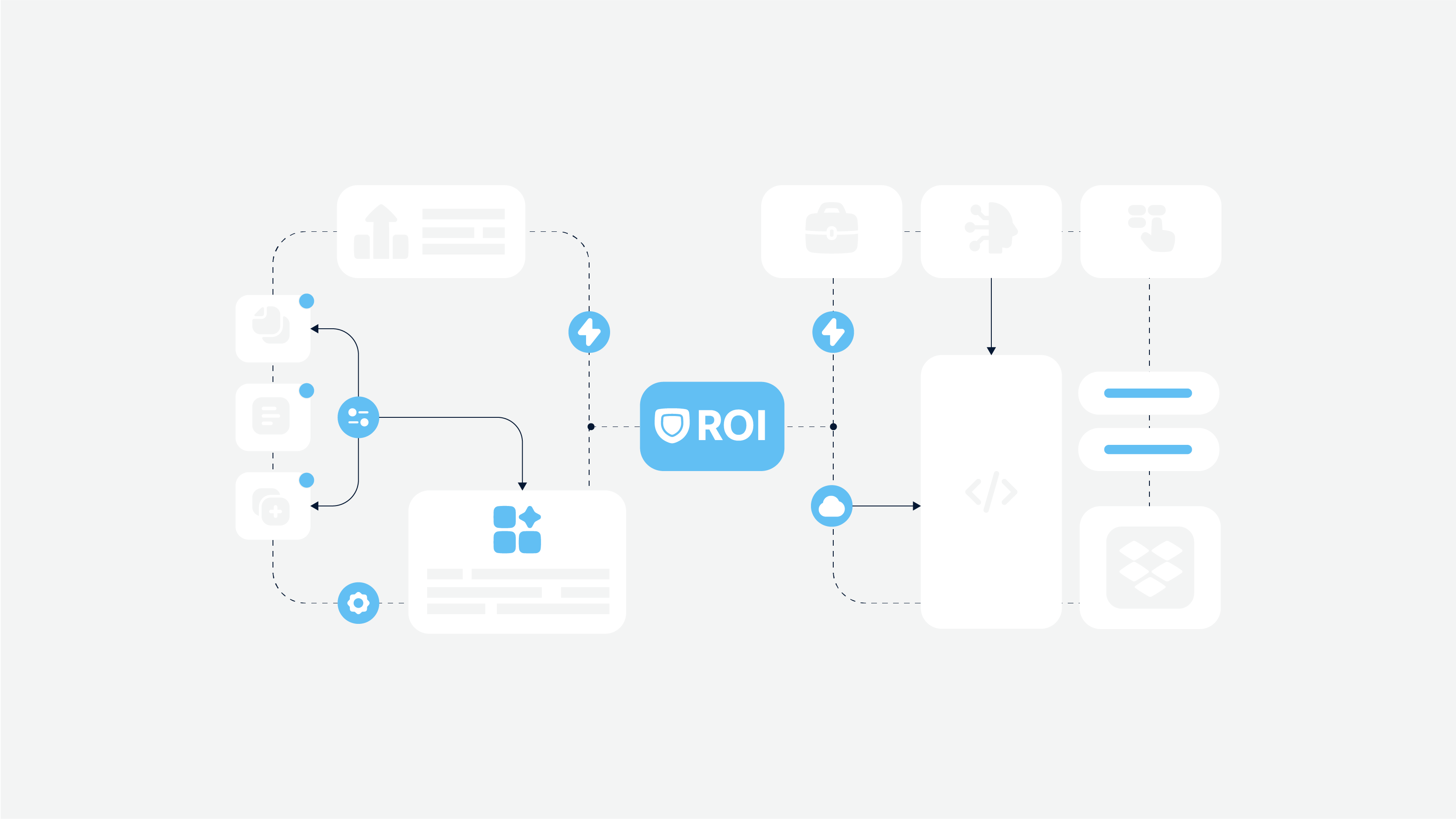The field of health care is complex, dynamic and has many challenges. The development of medicine requires resources and efforts, as well as the involvement of the latest technologies. Very often, such solutions can be created for another industry, but they come in handy in medicine.
The integration of VR in healthcare software is a vivid example of this. The industry is undergoing a remarkable transformation thanks to the revolutionary influence of virtual reality. As it becomes increasingly integrated into medical practices, it is proving to be a real game-changer in both medical training and patient care.
In this article, we will talk about key aspects of VR software development for healthcare, explore its deep impact and discuss how a simple VR app can reshape the future of medicine. We will also look at how this technology can provide an engaging and immersive learning experience for medical students to transform the healing process for patients.
So, let’s delve deeper into the transformative world of VR development in healthcare to understand what potential this cutting-edge technology has for medical education and patient treatment.
Virtual Reality Development in Healthcare: Facts and Figures
Before delving into the specific applications of VR in healthcare, let’s take a look at some facts that highlight the growth and potential of this technology. It is essential to understand the market dynamic and paint the full picture of VR software development for the healthcare industry.
The first data we would like to pay attention to is “Virtual Reality In Healthcare Market Size And Forecast” by Verified Market Research. According to it, virtual reality in the healthcare market size was valued at $ 2.89 billion in 2021 and is projected to reach more than $57 billion by 2030, growing at a CAGR of 39.36% from 2023 to 2030.
For comparison, according to Grand View Research, in 2020, the global healthcare virtual reality market size was valued at over $976 million. As you can see, the VR development market for healthcare is growing quite dynamically and, in general, predictably. Improvements in virtual reality technologies are driving this progress and market expansion.
The demand for innovative and extraordinary diagnostic methods is constantly growing. In addition, the experience of the Covid-19 epidemic has shown that the field of healthcare needs a radical transformation towards the improvement of telemedicine services and the development of mobile applications.
VR software allows you to use simulation to accurately reproduce complex medical cases in the virtual world, which greatly facilitates the process of training medical workers and consulting clients. Experts predict the rise in the use of virtual reality in hospitals and clinics as such organizations are facing a load of patients and an increase in chronic diseases, which require the adoption of advanced technology.
In general, medical facilities and professionals are already using VR software to improve patient outcomes and enhance medical education. In the future, such technologies will become more widespread due to their rapid pace of development and the potential to reduce healthcare costs.
How Virtual Reality Software Works
To understand how VR solutions transform healthcare, it’s essential to comprehend the basic concept of virtual reality software. First of all, VR technology creates a simulated environment that users can interact with through specialized devices, such as VR headsets and controllers. These devices immerse users in a computer-generated 3D world, replicating real-life scenarios and providing a sense of presence and engagement.
Secondly, unlike augmented reality, which is also actively used in medicine, virtual reality is a completely artificially generated environment that can have exact copies of existing objects but does not combine reality with artificial details.
With that in mind, VR software creators seamlessly integrate visuals, sounds, and other effects in VR, making it an excellent platform for medical training and research, as well as for patient care.
Where is VR software used most often?
According to the already mentioned “Virtual Reality In Healthcare Market Size And Forecast” by Verified Market Research,
VR development in the healthcare market is the most progressive and fastest growing in the following areas:
- research and diagnostics;
- hospitals and clinics;
- laboratories;
- pharmaceutical companies;
- research organizations.
You can see the dynamics of the use of VR tools in these areas in the diagram below.

Source: Verified Market Research
Let’s look at the most common examples of using VR software.
VR tools for medical training
Medical training is a very complex, strict, and demanding area, and it does not forgive inaccuracies or mistakes. It requires students to have hands-on experience before treating actual patients. Virtual reality offers a safe and controlled virtual environment for medical students to practice and refine their skills without jeopardizing patient well-being.
A proper VR app or a healthcare website with medical training modules allows students to simulate surgeries, practice diagnostic procedures, and interact with virtual patients. This immersive training helps build confidence, improve decision-making abilities, and reduce the learning curve. So, in this regard, VR software totally is a game changer.
CTA: Want to know more about the transformative power of virtual reality in medical training and patient care? Book a demo now to explore the limitless possibilities of VR technology in healthcare. Contact us today!
VR software for surgery
Surgical procedures demand precision and expertise, leaving no room for mistakes. VR development has revolutionized this field, allowing surgeons to plan and practice complex procedures beforehand.
Surgeons can use a specific VR app to create virtual replicas of the patient’s anatomy using patient-specific data. They can also simulate the surgical procedure. This enables them to identify potential complications, explore different approaches, and develop effective surgical strategies.
Virtual reality also offers a collaborative platform where surgical teams from different locations can participate simultaneously, enhancing knowledge sharing and enabling innovation. This is an excellent communicative tool with an immersive experience.
VR software for physical therapy
Physical therapy plays a crucial role in rehabilitation and recovery. VR technology for physical therapy offers patients an engaging and interactive experience, making the rehabilitation process more enjoyable and effective.
Let’s take a look at how VR development changes the physical therapy area.
- Better engagement. VR-based therapy adds an element of fun and excitement to physical therapy exercises, making sessions exciting experiences rather than hard and painful tasks.
- Personalized treatment. Therapists can create personalized treatment plans by customizing virtual exercises based on individual progress and limitations, optimizing each patient’s rehabilitation process.
- Gamification. Gamification elements in a virtual environment, such as challenges, rewards, and progress tracking, encourage active patient participation and improved performance.
- Real-time performance tracking. VR software allows therapists to monitor patient movements, posture, and exercise execution in real-time. This allows them to make immediate adjustments and provide patients with precise guidance.
- Improved treatment compliance. Engaging and interactive virtual reality therapy promotes treatment adherence and ensures that patients consistently follow their therapy routines.
VR-based therapy also provides a controlled setting for challenging activities, reducing risks for mobility-limited patients. This is all about a safe and comfortable environment. Moreover, virtual physical therapy opens up possibilities for remote patients, offering high-quality care without the need for frequent travel to specialized facilities.
VR software for pain management

Chronic pain poses significant challenges for both patients and healthcare providers. In recent years, VR development has emerged as a promising way to improve pain management as it offers a unique and innovative approach to alleviating suffering.
One of the key ways VR software helps with pain management is by providing a distraction from the sensation of pain. Professionals can immerse patients in calming virtual environments, and, at the same time, the VR app creates an engaging experience that captures their attention and diverts focus away from pain signals.
So, as you can see, the immersive nature of VR plays a key role in reducing pain perception. When patients are fully immersed in virtual reality, their brains are captivated by the virtual stimuli, effectively disrupting the pain processing pathways. As a result, patients experience lower pain intensity without relying solely on pharmaceutical interventions.
VR-based pain management has exhibited promising outcomes in various medical scenarios, particularly in cases involving burn injuries, chronic back pain, and during painful medical procedures. For patients with burn injuries, undergoing dressing changes and wound care can be incredibly painful. VR offers a way to ease this distress by transporting patients to virtual settings that help mitigate pain perception during these procedures.
Additionally, patients suffering from chronic back pain often find it challenging to get relief through traditional treatments. VR software for pain management offers a non-invasive and drug-free alternative that complements existing therapies, providing a more comprehensive approach to pain relief.
The Future of VR Technology in Healthcare
As you can see, virtual reality has already shown remarkable potential in healthcare and has brought significant advancements to the industry. It is obvious that this technology will be used more actively in medical procedures, patient care, and medical education.
Let’s take a look at some trends.
- Training and education. VR development will play a vital role in training medical professionals. Simulated surgeries and medical scenarios help students practice risk-free, improving their skills and decision-making abilities. This trend is likely to continue, leading to more effective and accessible medical training programs worldwide.
- Telemedicine. After the COVID-19 pandemic, telemedicine is on the rise, and it will further integrate VR capabilities, providing a more immersive experience for patients and doctors during remote consultations through special mobile or web applications. Moreover, virtual appointments will allow physicians to examine patients remotely with more depth and understanding, improving diagnostics and providing more accurate data for personalized treatment plans.
- Treatment of mental health disorders. VR software development has huge potential in treating various mental health conditions, such as phobias, post-traumatic stress disorder (PTSD), and anxiety disorders. In the future, therapists will have the opportunity to use custom VR applications for specific mental health needs.
- Surgical visualization and planning. As we have already told, VR enables surgeons to visualize and plan complex procedures with precision and accuracy. Three-dimensional reconstructions of patient anatomy can become indispensable for fast and accurate preoperative planning. It already minimizes risks during surgery and reduces recovery times.
- Remote patient monitoring. In the future, VR may facilitate remote patient monitoring by tracking vital signs and health data in real time. The potential of this technology is huge, and this is a very realistic prospect. Remorse patient monitoring could be especially beneficial for patients with chronic conditions, allowing healthcare professionals to intervene promptly when necessary.
- Mobile apps. Virtual reality can become an integral feature of healthcare mobile application development. This will help provide faster and better medical services, create virtual tours of hospitals and create immersive educational courses on first aid, etc., for patients.
As virtual reality continues to advance, it will undoubtedly reshape the landscape of healthcare. It can significantly improve patient outcomes, make medical training more efficient, and enhance therapeutic interventions. This, in turn, will lead to the formation of a more patient-centered, accessible, and effective healthcare ecosystem.
CTA: Become a part of the VR healthcare revolution. Contact us to get started!
Integrate With Virtual Reality Software Development Tools
VR software has become a groundbreaking solution for healthcare in multiple ways. From transforming medical training to enhancing patient care, it has shown huge potential in the medical field. It provides a very important immersive and interactive experience, which helps medical professionals to do their job much better and improves patient outcomes.
VR software development has brought a paradigm shift in medical education. With VR simulations, healthcare professionals can now practice surgeries, diagnose patients, and handle complex medical scenarios in a risk-free environment. This allows them to gain valuable experience and confidence before stepping into real-world medical settings.
VR solutions also transform patient care. Through VR therapy, patients can deal with pain management, psychological treatment, and rehabilitation more effectively. This technology can potentially revolutionize how patients receive care, making treatments more accessible and personalized.
At Cadabra Studio, we perfectly understand the potential of VR and know how to use it correctly. Starting with the optimal UI and UX design and ending with the integration of third-party tools, we know how to get the most out of modern technologies.
Therefore, if you are thinking about integrating VR solutions into your system and need specialist advice, feel free to contact us. We will be happy to provide you with answers to all your questions.










